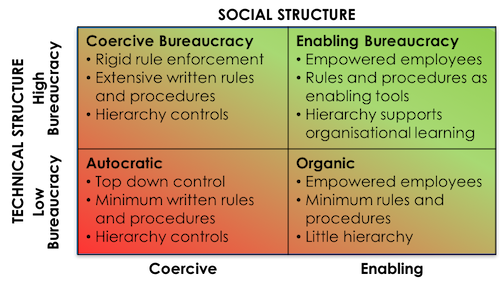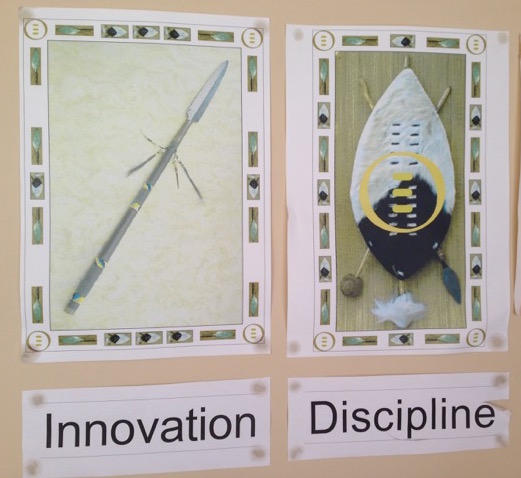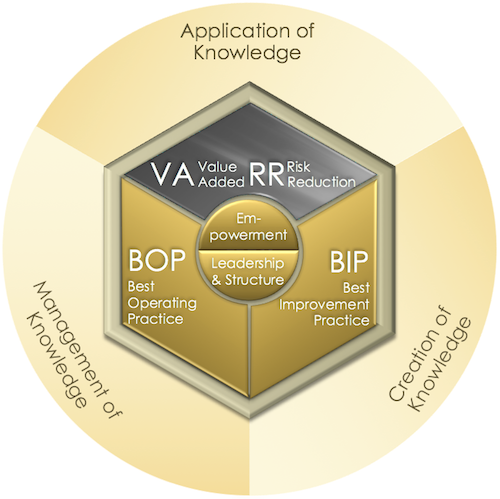impi! What's in the name? What's in the logo?
 Impi is a Zulu word for any armed body of men. It also bears in English a connotation to the art of warfare. In the early part of the 19th century the Zulu nation, then a relatively small tribe rose to a prominent nation. Under the leadership of King Shaka its influence span across Southern Africa. Shaka deeply transformed the art of warfare in the sub continent drawing from traditions and innovating. Aspects of warfare covered army structure and deployment, leadership, training, agility, logistic, weaponry, etc. Shaka's organisational development and leading of his impis were characterised by discipline (standardisation) and creative improvement.
Impi is a Zulu word for any armed body of men. It also bears in English a connotation to the art of warfare. In the early part of the 19th century the Zulu nation, then a relatively small tribe rose to a prominent nation. Under the leadership of King Shaka its influence span across Southern Africa. Shaka deeply transformed the art of warfare in the sub continent drawing from traditions and innovating. Aspects of warfare covered army structure and deployment, leadership, training, agility, logistic, weaponry, etc. Shaka's organisational development and leading of his impis were characterised by discipline (standardisation) and creative improvement.
Shaka's influence in improving the impi was sustained to the point that 71 years after his death, at the battle of Isandlwana in 1879, the numerically superior Zulu impi defeated the British despite a vast disadvantage in weapons technology. "The British Army had suffered its worst defeat against an indigenous technologically vastly inferior foe." (See Wikipedia article).
Relevance to our project
impi! as a set of solutions offers a disciplined and structured approach to establishing the Business Management Systems (ISO 9001 compliant) of organisations based on continuous improvement. It relies on the transformation of individuals that become a thinking people by improving processes through discipline and creativity.
So if an organisation and its employees constitute an impi, who would be the enemy? The various risks associated to operating a business and the wasteful activities embedded in the processes are the enemy. And it goes on: the age-grade regiments are the MBUs; the Bull-Horn formation is part of the management systems; the shields are the standards used to protect; the spears are the methods used to improve (problem solving, innovation, improvement projects) i.e. atrophy the risks and eradicate problems.
Reference to Lean principles
Social Structure and Technical Structure of an organisation as per Paul Adler (1999).

A stunning observation of the evolution of the impi under King Shaka is the level of innovation and creativity stemming from the cultural traditions and the simultaneous increase in discipline. In the Lean manufacturing approach, leadership intentionally develops a thinking people on the foundation of strong structures and standards.
A common view of organisational structures is to look at discipline and creativity as the two ends of the same structural continuum. Jeffrey Liker in a footnote of the Toyota Way (2004) makes reference to Paul Adler's paper on Building Better Bureaucracies (1999). Adler's model shows that creativity (enabling Social Structure) and discipline (strong Technical Structure) are two favourable features of an empowered organisation. The Intern (2015 film) makes an interesting point in the balance between discipline and creativity (although the critics would have missed in the movie the case for enabling bureaucracies).
 Long before we started building the blocks (the solutions) for impi! in 2012, we wanted to lay a foundation: a dynamic model that would help understand how a customer driven company operates. Business Management Systems are constructs designed to manage knowledge. In the words of Peter Drucker, "the essence of management is to make knowledge productive". The Core Cycle is an integrated model that attempts to make the statement actionable. It consists of five interrelated factors namely: contribution, best operating practice (BOP), best improvement practice (BIP), leadership and structure, and empowerment.
Long before we started building the blocks (the solutions) for impi! in 2012, we wanted to lay a foundation: a dynamic model that would help understand how a customer driven company operates. Business Management Systems are constructs designed to manage knowledge. In the words of Peter Drucker, "the essence of management is to make knowledge productive". The Core Cycle is an integrated model that attempts to make the statement actionable. It consists of five interrelated factors namely: contribution, best operating practice (BOP), best improvement practice (BIP), leadership and structure, and empowerment.
Back in 2005, the author became a champion for the implementation of a continuous improvement programme. He created the ancestor of the Core Cycle as a theme to communicate the change about to happen in the organisation. It consisted in a shield representing the discipline in the organisation and a spear representing innovation or improvement. With the shield, one can defend. In the case of the organisation, this means defending a business model, people, environment, shareholder value. But an organisation that only defends systems defined in the past cannot sustain without improvement: attacking to craft a future for the organisation by continuously improving. Improvement and Discipline have been identified as success factors of the impi.
Defending with the shield; attacking with the spear.
The evolution from this picture to the Core Cycle happened over the years. The shield became the Best Operating practice (BOP) and the spear became the Business Improvement Practice (BIP).
Rooted in our values
As we develop a relationship with our clients, partners as well as a nascent Community Of Practice, we hope to strengthen our values and live by them:
- We care relates to the protection offered by the shield. We care for others, the business model, the systems and processes, shareholder value, etc.
- We Continuously Improve relates to the spear and carving a future for impi!, our partners and clients.
- We Contribute by defeating the enemy: risk and waste (value addition).
Revealed in the impi! logo
 The impi! logo below represents the i of impi! and the exclamation mark; continuously spinning, like Deming's wheel, the PDCA cycle. We standardise, improve and sustain, like King Shaka did with the impi.
The impi! logo below represents the i of impi! and the exclamation mark; continuously spinning, like Deming's wheel, the PDCA cycle. We standardise, improve and sustain, like King Shaka did with the impi.
And by the way, why an "!" at the end of impi! ?
Because the impi is powerful, compelling and exciting. Listen to Johnny Clegg, relating the battle of Isandlwana in his song impi!
Related
Welcome to impi! - an evolutionary business improvement system for the digital era.
Introducing impi! - Pierre Bienvenüe - Concepts impi! uses to build business management systems. Convergence of Quality Assurance and Continuous Improvement.
ISO 9001:2015 Requirements Met By impi! Solutions - ISO 9001:2015 requirements based on lessons learned working with one of my clients since July 2015 under the guidance of one of the contributors to the new version of the standard.

 I18N ERROR: @tsiskin#footer_RSS_Feed
I18N ERROR: @tsiskin#footer_RSS_Feed